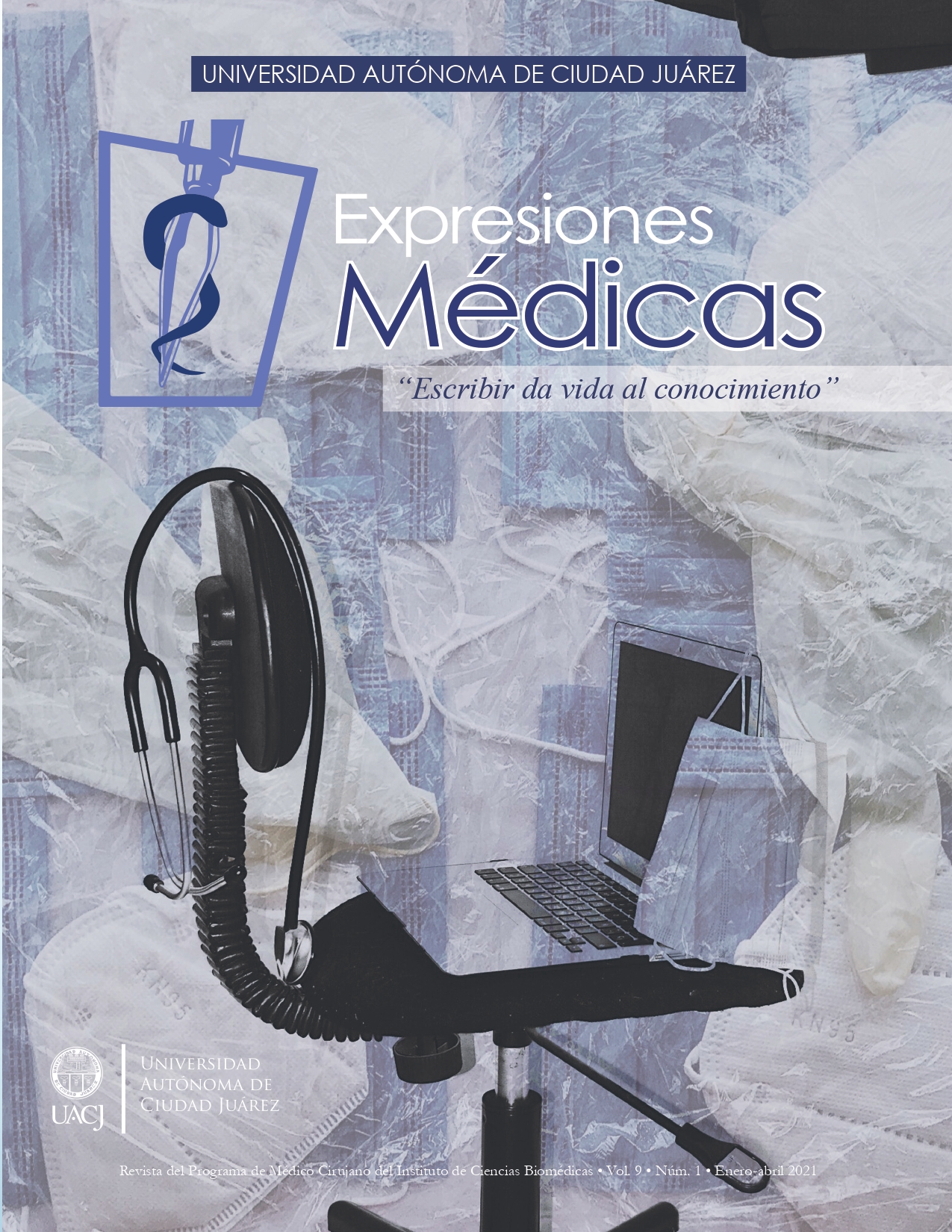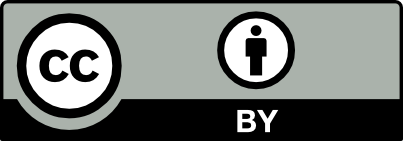Tratamiento farmacológico de aneurismas de la aorta abdominal
Palabras clave:
aneurisma, inflamación, elastasas, estatinasResumen
El aneurisma aórtico abdominal (AAA) es una dilatación progresiva localizada en la aorta abdominal, que se asocia a una elevada tasa de mortalidad. Su fisiopatología es compleja, pues implica múltiples mecanismos que culminan en una destrucción de la capa media de la aorta, pérdida de fibras de colágeno y un infiltrado inflamatorio que agrava aún más el proceso. Es necesario el desarrollo de un tratamiento farmacológico que demuestre la prevención de la expansión y, por lo tanto, la ruptura del AAA. Actualmente existen algunos medicamentos que han mostrado ser beneficiosos; sin embargo, no hay suficiente evidencia que pruebe su efectividad. La investigación sobre los mecanismos moleculares de la fisiopatología ha permitido el desarrollo de novedosos fármacos con resultados prometedores en modelos animales, pero todavía es necesario ampliar la investigación acerca de estos nuevos blancos terapéuticos.
Descargas
Citas
Sakalihasan, N., Michel, J., Katsargyris, A., Kuivaniemi, H., Defraigne, J., & Nchimi, A. Abdominal Aortic Aneurysm. Nat. Rev. Dis. Prim.,2018; 4: 4-34.
Blum, G., Leucona, N., Mijangos, F., Olivares, S., Muñoz, R., & Ziga,
A. Propuesta de algoritmo diagnóstico de aneurisma de aorta abdominal con laboratorio vascular no invasivo en el Servicio de Angiología del Hospital General de México. Rev. Mex. Angiol., 2019; 47: 8-20.
Chaikof, E. L., Dalman, R. L., Eskandari, M. K., Jackson, B. M., Lee, W. A., Mansour, M. A. et al. The Society for Vascular Surgery Practice Guidelines on the Care of Patients with an Abdominal Aortic
Aneurysm. J. Vasc. Surg., 2018; 67: 2-77. https://doi.org/10.1016/j.jvs.2017.10.044
Kuivaniemi, H., Ryer, E. J., Elmore, J. R., & Tromp, G. Understanding the Pathogenesis of Abdominal Aortic Aneurysms. Expert Rev. Cardiovasc. Ther., 2015; 13: 975-987.
Zhang, S. L., Du, X., Chen, Y. Q., Tan, Y. S., & Liu, L. Potential Medication Treatment According to Pathological Mechanisms in Abdominal Aortic Aneurysm. J. Cardiovasc. Pharmacol., 2018; 71: 46-57.
Wang, Y., Liu, Z., Ren, J., & Xiang, M.-X. Pharmacological Therapy of Abdominal Aortic Aneurysm: An Update. Curr. Vasc. Pharmacol., 2017; 16: 114-124.
Oesterle, A., Laufs, U., & Liao, J. K. Pleiotropic Effects of Statins on the Cardiovascular System. Circ. Res., 2017; 120: 229-243.
Li, Y., Lu, G., Sun, D., Zuo, H., Wang, D. W., & Yan, J. Inhibition of Endoplasmic Reticulum Stress Signaling Pathway: A New Mechanism of Statins to Suppress the Development of Abdominal Aortic Aneurysm. plos One, 2017; 12: 1-19.
Zhang, W., Liu, Z., & Liu, C. Effect of Lipid-modifying Therapy on Long-term Mortality after Abdominal Aortic Aneurysm Repair: A Systemic Review and Meta-analysis. World J. Surg., 2015; 39: 794-801.
Kim, W., Gandhi, R. T., Peña, C. S., Herrera, R. E., Schernthaner, M. B., Acuña, J. M. et al. Influence of Statin Therapy on Aneurysm Sac Regression after Endovascular Aortic Repair. J. Vasc. Interv. Radiol.,2017; 28: 35-43. http://dx.doi.org/10.1016/j.jvir.2016.09.010
Salata, K., Syed, M., Hussain, M. A., De Mestral, C., Greco, E., Mamdani, M. et al. Statins Reduce Abdominal Aortic Aneurysm Growth, Rupture, and Perioperative Mortality: A Systematic Review and MetaAnalysis. J. Am. Heart Assoc., 2018; 7.
Blanchard, J. F., Armenian, H. K., Peeling, R., Friesen, P. P., Shen, C.,& Brunham, R. C. The Relation between Chlamydia pneumoniae Infection and Abdominal Aortic Aneurysm: Case-control Study. Clin. Infect.Dis., 2000; 30: 946-947.
Fields, G. B. The Rebirth of Matrix Metalloproteinase Inhibitors:Moving Beyond the Dogma. Cells, 2019; 8: 984.
Kroon, A. M., & Taanman, J. W. Clonal Expansion of T Cells inAbdominal Aortic Aneurysm: A Role for Doxycycline as Drug of Choice? Int. J. Mol. Sci., 2015; 16: 1178-1195.
Arnoud, M., Stijnrn, T., Waar, M., Hamming, J., Van Bockel, H., &
Lindeman, J. Original Research Doxycycline for Stabilization of Abdominal Aortic Aneurysms. Ann. Intern. Med., 2017; 159: 815-823.
Golledge, J., Moxon, J. V., Singh, T. P., Bown, M. J., Mani, K., & Wanhainen, A. Lack of an Effective Drug Therapy for Abdominal Aortic Aneurysm. J. Intern. Med., 2020; 288: 6-22.
Wemmelund, H., Hundborg, H., Johnsen, S., & Lindholt, J. Preadmission Use of Renin–Angiotensin Blockers and Rupture of Abdominal Aortic Aneurysm: A Nationwide, Population-based Study. Pharmacoepidemiol. Drug Saf., 2015; 25: 141-150.
Salata, K., Syed, M., Hussain, M. A., Eikelboom, R., De Mestral, C., Verma, S. et al. Renin-Angiotensin System Blockade Does Not Attenuate Abdominal Aortic Aneurysm Growth, Rupture Rate, or Perioperative Mortality after Elective Repair. J. Vasc. Surg., 2018; 67: 629-636. https://doi.org/10.1016/j.jvs.2017.09.007
Bicknell, C., Kiru, G., Falaschetti, E., & Powell, N. An Evaluation of the Effect of An Angiotensin-converting Enzyme Inhibitor on the Growth Rate of Small Abdominal Aortic Aneurysms: A Randomized Placebo-controlled Trial (aardvark). Eur. Heart J., 2016; 37: 3213-
Kristensen, K. E., Torp-Pedersen, C., Gislason, G. H., Egfjord, M., Rasmussen, H. B., & Hansen, P. R. Angiotensin-converting Enzyme Inhibitors and Angiotensin ii Receptor Blockers in Patients with Abdominal Aortic Aneurysms: Nation-wide Cohort Study. Arterioscler. Thromb. Vasc. Biol., 2015; 35: 733-740.
Merashli, M., Eid R., E. I., & Uthman, I. A Review of Current Management of Vasculo-Behcet’s. Curr. Opin. Rheumatol., 2018; 30: 50-56.
Movahedi, M., Beauchamp, M., Abrahamiwucz, M., Michau, L., Dixon, W., & Ray, D. Risk of Incident Diabetes Mellitus Associated with the Dosage and Duration of Oral Glucocorticoid Therapy in Patients with Rheumatoid Arthritis. Arthritis Rheumatol., 2016; 68:
-1098.
Tajima, Y., Goto, H., Ohara, M., Hashimoto, M., Akamatsu, D.,Shimizu, T. et al. Oral Steroid Use and Abdominal Aortic Aneurysm Expansion—Positive Association. Circ. J., 2017; 81: 1774-1782.
Kritikou, E., Kuiper, J., & Kovanen, P. T. Bot i. The Impact of Mast Cells on Cardiovascular Diseases. Eur. J. Pharmacol., 2016; 778: 103-115. http://dx.doi.org/10.1016/j.ejphar.2015.04.050
Gao, R., Liu, D., Guo, W., Ge, W., Fan, T., Li, B. et al. Meprin-(Mep1a) Enhances tnf-a Secretion by Mast Cells and Aggravates Abdominal Aortic Aneurysms. Br. J. Pharmacol., 2020; 177: 2872-2885.
Sillesen, H., Eldrup, N., Hultgren, R., Lindeman, J., Bredahl, K.,Thompson, M. et al. Randomized Clinical Trial of Mast Cell Inhibition in Patients with a Medium-sized Abdominal Aortic Aneurysm. Br. J.Surg., 2015; 102: 894-901.
Cameron, S. J., Russell, H. M., & Phillip Owens, A. Antithrombotic Therapy in Abdominal Aortic Aneurysm: Beneficial or Detrimental? Blood, 2018; 132: 2619-2628.
Owens, P., Edwards, T., Antoniak, S., Geddings, E., Jahangir, E., Denny, J. et al. Platelet Inhibitors Reduce Rupture in a Mouse Model of Established Abdominal Aortic Aneurysm. Arter. Thromb. Vasc. Biol.,2015; 35: 2032-2041.
Courtis, A., Makrygiannis, G., Cheramy-Bien, J., Purnelle, A., Pirotte, B., Dogne, J. et al. Therapeutic Applications of Prostaglandins and Thromboxane a2 Inhibitors in Abdominal Aortic Aneurysms. Curr.Drug Targ., 2018; 19: 1247-1255.
Wanhainen, A., Mani, K., Kullberg, J., Svensjö, S., Bersztel, A., Karlsson, L. et al. The Effect of Ticagrelor on Growth of Small Abdominal Aortic Aneurysms-A Randomized Controlled Trial. Cardiovasc. Res.,2020; 116: 450-456.
Sénémaus, J., Caligiuri, G., Etienne, H., Delbosc, S., Michel, J., & Coscas, R. Translational Relevance and Recent Advances of Animal Models of Abdominal Aortic Aneurysm. Arterioscler. Thromb. Vascilar Biol., 2017; 37: 401-410.
Lysgaard Poulsen, J., Stubbe, J., & Lindholt, J. S. Animal Models Used to Explore Abdominal Aortic Aneurysms: A Systematic Review. Eur. J. Vasc. Endovasc. Surg., 2016; 52: 487-499. http://dx.doi.org/10.1016/j.ejvs.2016.07.004
Ijaz, T., Sun, H., Pinchuk, I. V., Milewicz, D. M., Tilton, R. G., & Brasier, A. R. Deletion of nf- b/Rela in Angiotensin ii-Sensitive Mesenchymal Cells Blocks Aortic Vascular Inflammation and Abdominal Aortic Aneurysm Formation. Arterioscler. Thromb. Vasc. Biol., 2017; 37:
-1890.
Li, D., Ma, J., Wang, L., & Xin, S. Apigenin Prevent Abdominal Aortic Aneurysms Formation by Inhibiting the nf- b Signaling Pathway. J. Cardiovasc. Pharmacol., 2020; 75: 229-239.
Neumann, C., Scheffold, A., & Rutz, S. Functions and Regulation of T Cell-derived Interleukin-10. Semin. Immunol., 2019; 44: 101-344.
Zhu, H., Qu, X., Zhang, C., & Yu, Y. Interleukin-10 Promotes Proliferation of Vascular Smooth Muscle Cells by Inhibiting Inflammation in Rabbit Abdominal Aortic Aneurysm. Int. J. Clin. Exp. Pathol., 2019;12: 1260-1271.
Guo, X., Yuan, S., Liu, Y., Zeng, Y., Xie, H., Liu, Z. et al. Serum IgE Levels Are Associated with Coronary Artery Disease Severity. Atherosclerosis, 2016; 251: 355-360. http://dx.doi.org/10.1016/j.atherosclerosis.2016.05.020
Li, J., Deng, Z., Zhang, X., Liu, F., Yang, C., Shi, G. P. Deficiency of Immunoglobulin e Protects Mice from Experimental Abdominal Aortic Aneurysms. faseb J., 2020; 34: 3091-3104.
Marques, F., Priestes, P., Byars, S., Ritchie, S., Wurtz, P., Patel, S. et al. Experimental and Human Evidence for Lipocalin-2 (Neutrophil Gelatinase-associated Lipocalin [ngal]) in the Development of Cardiac Hypertrophy and Heart Failure. J. Am. Heart Assoc., 2017; 6.
Tarín, C., Fernández-García, C. E., Burillo, E., Pastor-Vargas, C., Llamas-Granda, P., Castejón, B. et al. Lipocalin-2 Deficiency or Blockade Protects against Aortic Abdominal Aneurysm Development in Mice. Cardiovasc. Res.; 111: 262-273.
Serhan, C. N., & Levy, B. D. Resolvins in Inflammation: Emergence of the Pro-resolving Superfamily of Mediators Protection Versus Uncontrolled Inflammation: First Responders and Resolution. J. Clin. Invest., 2018; 128: 2657-2669. http://jci.me/97943/pdf
Pope, N., Salmon, M., Davis, J., Chatterjee, A., Su, G., Conte, M. et al. D-series Resolvins Inhibit Murine Abdominal Aortic Aneurysm Formation and Increase m2 Macrophage Polarization. faseb J., 2016; 30: 4192-4201.
Sousa, M., Abd, A., Stannard, G., & Heather, L. Hypoxia-inducible Factor 1 Signalling, Metabolism and its Therapeutic Potential in Cardiovascular Disease. Biochim. Biophys Acta–Mol. Basis Dis., 2019; 1865: 831-843.
Tsai, S. H., Huang, P. H., Hsu, Y. J., Peng, Y. J., Lee, C. H., Wang, J. C. et al. Inhibition of Hypoxia Inducible Factor-1 Attenuates Abdominal Aortic Aneurysm Progression through the Down-regulation of Matrix Metalloproteinases. Sci. Rep., 2016; 6: 1-11. http://dx.doi.org/10.1038/srep28612
Chen, F., Zhang, Z. D., & Zhu, X. H. Inhibition of Development of Experimental Abdominal Aortic Aneurysm by c-Jun n-Terminal Protein Kinase Inhibitor Combined with Lysyl Oxidase Gene Modified Smooth Muscle Progenitor Cells. Eur. J. Pharmacol., 2015; 766:114-121. http://dx.doi.org/10.1016/j.ejphar.2015.09.046
Motoki, T., Kurobe, H., Hirata, Y., Nakayama, T., Kinoshita, H., Rocco, K. et al. ppar- Agonist Attenuates Inflammation in Aortic Aneurysm Patients. Gen Thorac. Cardiovasc., 2015; 63: 565-571.
Ivanova, E., Myasoedova, V., Melnichenko, A., & Orekhov, A. Peroxisome Proliferator-Activated Receptor (ppar) Gamma Agonists as Therapeutic Agents for Cardiovascular Disorders: Focus on Atherosclerosis. Curr. Pharm. Des., 2017; 27: 1119-1124.
Nakashiro, S., Matoba, T., Umezu, R. et al. Pioglitazone-incorporated Nanoparticles Prevent Plaque Destabilization and Rupture by Regulating Monocyte/Macrophage Differentiation in ApoE -/- Mice.Arterioscler. Thromb. Vasc. Biol., 2016; 36: 491-500.
Klaus, V., Schmies, F., Reeps, C. et al. Cathepsin s is Associated with Degradation of Collagen i in Abdominal Aortic Aneurysm. Vasa, 2018; 47: 285-293.
Lai, C. H., Chang, J. Y., Wang, K. C., Lee, F. T., Wu, H. L., & Cheng, T. L. Pharmacological Inhibition of Cathepsin s Suppresses Abdominal Aortic Aneurysm in Mice. Eur. J. Vasc. Endovasc. Surg., 2020; 59:371-372. https://doi.org/10.1016/j.ejvs.2020.01.008
Descargas
Publicado
Cómo citar
Número
Sección
Licencia
Derechos de autor 2021 Iskra Gissel Camarillo Silerio

Esta obra está bajo una licencia internacional Creative Commons Atribución 4.0.



